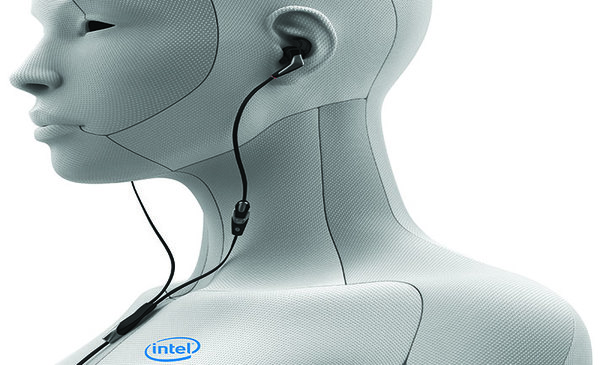
We’ve said goodbye to the silence of pages, flipcharts, point-of-sale materials and most products. Savvy marketers realize those have been replaced by the audio-enabled world of mobile videos, apps, YouTube, and digital signage. And now, the Internet of Things, connecting the cloud to everything from refrigerators to projectors to vehicles to industrial products.
What impression will your product’s sound convey when a device successfully receives incoming information, encounters an error, is running out of power? And how will those sounds relate to your brand’s sales video, app opening sound, your call center on-hold music?
Brands had better be ready. If you’re not creating an audio universe (and managing it) with the same care you do your visual identity, you’re dangerously late.
How many companies operate in an auditorily chaotic environment? Katie Perry’s “Roar” for meetings, Brian Eno for on-hold music, oldies-but-goodies for commercials, and perhaps a synthesized “whoosh” for app-opening sounds. Diagnosis: multiple brand personality disorder.
But a cure exists. Audio Branding. A discipline that has been used in multilingual Europe for more than 20 years.
In the same way a brand has graphics guidelines and a logo to help differentiate from its competitors, it must also develop a sound identity. And it must manage that identity with the same balance of rigor and flexibility that goes into managing a visual brand.
This requires a system of sounds based on a proprietary audio DNA that expresses your brand’s values and personality–and it becomes an identifier across all your touchpoints. It requires a consistent feel, from your advertising, to call-waiting messages, to showrooms, to websites’ training videos, to YouTube to products.
What’s more, music is a globally understood language that can define what you stand for and underscore what differentiates you from competitors.
Social media–on which time spent continues to grow across PC and mobile devices–makes everything transparent. If your corporate videos and your ringtones speak in different vocabularies, everyone will know.
A Brand’s Most Important Asset Is Trust
And the best way to earn trust is to behave in a consistent manner.
In music, that requires a well-designed audio DNA that centers the brand’s sound and infuses the execution of music at the brand’s touchpoints. A focused approach to your own sound can bring congruity to brand experiences and that supports trust-building–more so than does the use of licensed music. Though licensed songs can add impact or aid memory, they can also detract from the brand, especial if they don’t express its values. And impact without meaning adds to confusion and clutter.
How To Design Your Brand’s Earprint
So how do you go about bringing meaning to the audio dimension of your brand?
Before anything, you and your audio design agency (not your ad agency, though they are key partners in the process) will examine your brand’s values and aspirations. Do you wish to express who you are today or what you’re evolving to? In the course of recent activities, has a particular value taken precedence over others? Any tensions? For instance, between reliability and innovation? Delicacy and efficacy?
You may also explore the historical audio cues your company has used and contrast your sound landscape with those of competitors. Together with your audio branding experts, you’ll work to find the unique and differentiating dimensions your audio identity must express. In short, you’ll build the brief for the audio brand strategy.
As an example, the La Roche-Posay audio DNA captures the purity and sensitivity of the products, while the Atlanta Convention & Tourism bureau audio DNA conveys the sound of dynamism, warmth and eclecticism.
A Defined Process
After you and your team determine the brand’s core values, music strategists will explore and curate different musical approaches to communicate those traits. These will be translated to musical “mood boards.” These selections are brought to a workshop that includes the marketing team, the most trusted agency (or agencies) and the audio branding experts where they’re OK’d, rejected, discussed until a general agreement has emerged.
Once the musical ingredients have been defined in the mood board exercise, it’s time to create the music. Sound designers will compose a unique and tailored audio DNA that becomes woven into your brand’s many touchpoints. Is there a sound when a mobile coupon is redeemed? What ringtones might your sales force use? What will get people’s blood coursing as you rise to the podium at the global meeting? What will make people feel welcome at an expo booth?
I’m not talking about mindless repetition here.
Each point of contact presents an opportunity to deepen the brand relationship. Customer experience needs to be considered, and the sound needs to be adjusted according to the touchpoint (commercials, telephone on-hold messages, retail spaces, Internet, events). Think of it as an audio media plan.
The time is now for brand’s to harness music’s power. This will help you lead in the age of the Internet of Things…and help you prepare for its more abstract cousin, the Internet of Everything.
Contributed to Branding Strategy Insider by Colleen Fahey, Sixième Son
Build A More Valuable Future For Your Brand At The Un-Conference – Marketing’s Only Problem Solving Event.
The Blake Project Can Help: The Brand Positioning Workshop
Branding Strategy Insider is a service of The Blake Project: A strategic brand consultancy specializing in Brand Research, Brand Strategy, Brand Licensing and Brand Education
FREE Publications And Resources For Marketers












17 Responses to “Defining Your Audio Brand Strategy”